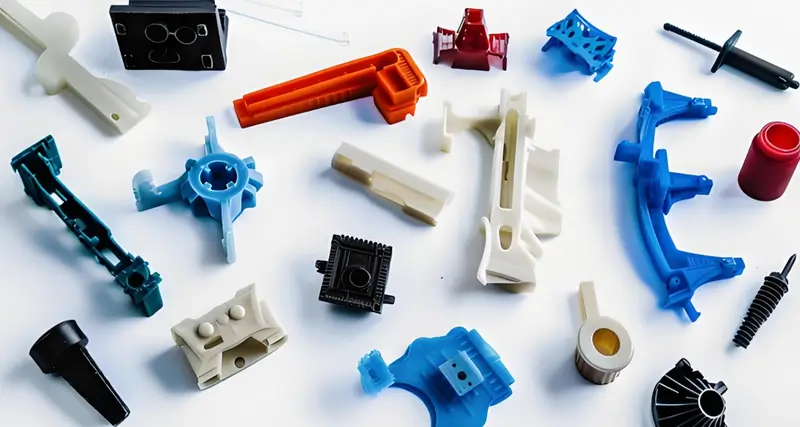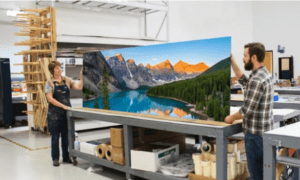Medical device manufacturers face high stakes when moving molds between facilities, suppliers, or production lines. Regulatory compliance is mandatory, with standards like the FDA’s 21 CFR Part 820 and ISO 13485 requiring thorough documentation, validated processes, and strict control over sterility and part quality. A single mistake can lead to recalls, audits, or severe penalties. Many companies, however, overlook how complex these transfers are in a tightly regulated industry. This guide explains how to manage mold transfers effectively while staying compliant and choosing a partner who understands the requirements.
Why Medical Device Mold Transfers Stand Out
Mold transfers in other industries often prioritize cost or speed. In medical device manufacturing, the focus shifts to compliance and precision. Here’s why these transfers are unique.
First, regulators scrutinize every detail. The FDA, ISO 13485, and sometimes the EU Medical Device Regulation set strict rules. Incomplete records or process errors can delay approvals or trigger investigations. Second, molds for devices like syringes, implants, or surgical instruments must remain free of contamination. Any residue, improper cleaning, or material breakdown violates compliance and risks patient safety.
Finally, traceability is critical. Regulators expect a complete record of the mold’s history, from its creation to every transfer and maintenance event. Unlike consumer products, medical devices have no room for error. A poorly managed transfer can result in scrapped production runs, delayed market entry, or hefty fines.
Main Challenges in Keeping Transfers Compliant
Moving molds while meeting regulatory standards is no simple task. Here are the primary hurdles manufacturers face and how to address them.
Keeping Validation Intact
Molds used for medical devices go through extensive validation, known as Installation Qualification, Operational Qualification, and Performance Qualification (IQ/OQ/PQ). Moving a mold can disrupt this validation if the new setup doesn’t match the original process exactly. For example, slight changes in temperature, pressure, or cycle times can render the mold’s validation void. A skilled transfer service helps by following validation protocols during disassembly, transport, and reinstallation. They also ensure critical settings stay consistent after the move.
Avoiding Contamination
A mold previously used for non-medical parts, like automotive components, cannot produce medical devices without thorough cleaning. Even tiny traces of residue can contaminate parts, leading to compliance failures. Medical-grade transfers require cleaning methods that meet FDA standards, such as removing all traces of prior resins. Molds must also be packaged in sterile materials and transported in controlled environments to prevent exposure to dust or microbes.
Ensuring Complete Documentation
Regulators expect a detailed paper trail for every mold transfer. Missing records, such as maintenance logs or material certifications, can halt production or fail an audit. A reliable transfer provider supplies a full mold history, including cleaning validation reports and inspection data from before and after the move. This documentation proves to regulators that every step was handled correctly.
Protecting Mold Condition
Medical molds are delicate, high-precision tools. Mishandling during transport or storage can cause tiny cracks, misalignments, or wear that affects the quality of parts produced. For instance, a mold that no longer meets tight tolerances can produce defective devices. Specialized transfer services use secure packaging with shock monitors to track handling and climate-controlled transport to prevent damage from temperature changes.
How Expert Services Keep Transfers Compliant
Not every mold transfer company understands the medical device industry’s unique needs. A provider with specialized knowledge addresses the following areas to ensure compliance.
Deep Regulatory Expertise
A qualified partner knows the ins and outs of FDA and ISO 13485 requirements. Their processes are designed with compliance in mind, not patched together after the fact. They provide documentation that regulators expect, such as validation reports and cleaning certifications, and can support manufacturers during audits.
Medical-Grade Cleaning and Handling
Standard cleaning methods fall short for medical molds. Expert providers use validated cleaning techniques, like those approved for USP Class VI materials, to remove all contaminants. They also test for particulates to confirm the mold is clean enough for medical use. During transport, molds are sealed in sterile packaging and moved in controlled conditions to maintain cleanliness.
Smooth Revalidation Process
After a transfer, the mold must perform exactly as it did before. A knowledgeable provider helps re-execute IQ/OQ/PQ protocols at the new site and verifies that the production process hasn’t changed. This step confirms to regulators that the mold still meets its original validation standards.
Complete Tracking of the Process
From the moment the mold is picked up to when it’s reinstalled, every action is documented. This includes transport conditions, like temperature and humidity logs, and inspection reports before and after the move. A full chain of custody ensures no gaps exist in the mold’s history, which regulators can review if needed.
How to Choose the Right Transfer Services
Choosing the best mold transfer services is critical to a successful, compliant move. Not all companies are equipped to handle medical device requirements. Here’s what to look for when selecting a partner.
Experience in the Medical Industry
Ask for examples of past transfers involving FDA-regulated devices. A company with medical experience understands the specific challenges, like sterile handling and regulatory documentation. A general logistics provider may lack this expertise and miss critical steps.
Processes Built for Compliance
Check if the provider offers documentation templates that meet FDA standards, cleaning validation reports, and audit support. These services show they prioritize compliance and can handle regulatory scrutiny. A company that can’t provide these likely isn’t suited for medical transfers.
Technical Skills for Precision Molds
Ensure the provider can manage high-precision molds, such as those used for micro-tolerance devices like catheters or implants. They should also offer sterile packaging and cleanroom reassembly if needed. These capabilities are essential for maintaining mold and part quality.
Open and Honest Communication
A trustworthy partner is transparent about their process. They should provide detailed quotes that outline compliance steps, such as cleaning and validation procedures. Ask for references from other medical manufacturers to confirm their reliability and performance.
Common Pitfalls to Avoid
Manufacturers can run into trouble if they approach mold transfers too casually. One frequent mistake is assuming a standard logistics company can handle a medical transfer. Without industry-specific knowledge, these providers may skip critical steps like cleaning validation or proper documentation, leading to compliance issues. Another error is underestimating the time needed for revalidation. Rushing this process can result in errors that invalidate the mold’s prior qualifications, delaying production.
Cutting costs by choosing an inexperienced provider is another risk. While a lower price may seem appealing, the long-term costs of recalls, scrapped parts, or regulatory penalties far outweigh initial savings. Investing in a specialized service upfront prevents these headaches.
Why Compliance Matters More Than Ever
Regulatory oversight in the medical device industry is only growing stricter. The FDA and other bodies are increasing their focus on supply chain practices, including mold transfers. Non-compliance can lead to more than just fines. It can damage a company’s reputation, disrupt product launches, and erode trust with customers and regulators. A well-executed transfer, on the other hand, keeps production on track and demonstrates a commitment to quality and safety.
Wrapping It Up
Moving molds for medical devices is about more than just transporting equipment. It’s about protecting compliance at every stage, from validation and cleanliness to documentation and mold condition. A single oversight can derail a project or invite regulatory trouble.
The right transfer partner does more than move molds. They ensure the process meets FDA and ISO standards, safeguard the mold’s performance, and provide records that stand up to audits. For manufacturers, choosing a provider with medical expertise isn’t optional. It’s the foundation of a successful transfer and a compliant operation.
If you’re planning a mold transfer, prioritize experience and compliance over shortcuts. Your reputation and regulatory standing depend on it.





























